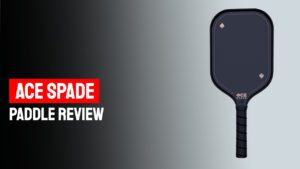What Is The Most Common Pickleball Injury?
“Tennis elbow may challenge your game, but never let it defeat your spirit. In every setback, there’s a chance for an epic comeback.”
Last updated

Pickleball, blending elements of tennis, badminton, and ping-pong, has emerged as a popular sport for players of all ages. However, like any physical activity, it has its share of injury risks.
Key among these are tennis elbow, ankle sprains, and rotator cuff injuries, each with distinct causes and symptoms. This article aims to shed light on these common pickleball injuries, offering insights into prevention and management.
Whether you’re a seasoned player or a newcomer to the court, understanding these injuries is crucial for a safe and enjoyable pickleball experience. Let’s explore these common concerns and learn how to safeguard against them.
Common Injuries in Pickleball and Similar Sports
Tennis Elbow: A Frequent Concern in Racquet Sports
For players looking to minimize the risk of tennis elbow, particularly in pickleball, it’s essential to be well-informed about prevention and the right equipment. You can find comprehensive guidance on prevention techniques in the article “How To Avoid Tennis Elbow In Pickleball?.” This resource offers valuable insights into proper playing techniques, stretching exercises, and other vital tips to keep your arm and elbow healthy.
For pickleball players, effectively managing and preventing tennis elbow is crucial, including selecting the right equipment. Ergonomically designed paddles, which are gentle on the arm and elbow, play a pivotal role.
Exploring options for the best pickleball paddles suited for tennis elbow can provide insights into choices that help reduce the stress on forearm muscles and tendons. This careful selection of equipment and proper playing techniques is essential for players looking to protect themselves from tennis elbow.
Ankle Sprains in Pickleball: Causes and Prevention
Ankle sprains are a frequent injury among pickleball players, often resulting from the sport’s quick-paced nature. These sprains occur when the ankle ligaments stretch or tear due to sudden, awkward movements.
Key factors contributing to ankle sprains in pickleball include rapid directional changes and improper footwear. Players should focus on wearing shoes that offer adequate support and grip to prevent these injuries.
Engaging in exercises that enhance ankle strength and flexibility is also beneficial. Balance training can further help in stabilizing the ankles. Should an ankle sprain occur, immediate action involving rest, ice, compression, and elevation (RICE method) is crucial.
For severe cases, seeking medical attention is advisable to ensure proper treatment and recovery. By taking these preventive steps, players can continue enjoying pickleball while reducing the risk of ankle injuries.
Rotator Cuff Injuries: A Pickleball Player’s Concern
Rotator cuff injuries are a significant concern for pickleball players, primarily due to repetitive shoulder movements. These injuries typically involve pain and weakness in the shoulder, affecting a player’s ability to perform overhead motions effectively.
Causes include repetitive strain and wear-and-tear on the shoulder tendons during serves and smashes. Players can mitigate these risks by incorporating shoulder-strengthening exercises into their fitness routines. Proper warm-up exercises that focus on shoulder mobility and stability are also crucial.
Emphasizing correct serving and smashing techniques can reduce undue stress on the shoulder. In instances of rotator cuff injury, rest and ice application serve as initial treatments. Consulting with a healthcare professional for a tailored rehabilitation plan is essential for a full recovery.
By proactively addressing these risks, pickleball players can protect their shoulders and maintain a high level of play.
Injury Prevention Strategies in Pickleball
Injury prevention in pickleball is a multi-faceted approach vital for beginners and seasoned players. These exercises are crucial for preparing and recovering the body, starting with warm-up and cool-down routines.
Dynamic stretching enhances flexibility and prepares muscles and joints for the game’s physical demands. Moreover, incorporating strength training into regular workouts can bolster core, leg, and arm muscles, providing better support and reducing injury risk during play.
The technique also plays a crucial role in preventing injuries. Proper form, especially in serves and smashes, helps avoid undue stress on various body parts. This is where guidance from experienced coaches becomes invaluable, as they can correct poor techniques that lead to injuries like tennis elbow or shoulder strain.
The right equipment is equally important. Shoes designed for court sports can significantly reduce the risk of ankle and knee injuries. They offer the necessary lateral support and grip for the quick, multi-directional movements in pickleball.
Similarly, choosing a paddle that aligns with a player’s skill level and physical capabilities can prevent arm and shoulder strain. Considering personal protective gear like knee braces or wrist supports can also add an extra layer of injury prevention, particularly for those with pre-existing conditions.
Listening to the body and taking rest days when needed is essential. Overexertion can lead to more severe injuries, so being attuned to any pain or discomfort and taking appropriate action is critical to injury prevention in pickleball.
When to Seek Medical Attention?
While minor aches and pains might be treated at home with rest and over-the-counter pain relievers, specific symptoms warrant a visit to a healthcare professional.
These include severe pain, swelling that doesn’t reduce with home treatment, inability to bear weight on the injured area, joint instability, or decreased range of motion. Chronic injuries, like persistent tennis elbow or shoulder pain that doesn’t improve with rest and home care, also require professional assessment.
Early intervention can prevent more severe complications and ensure that players receive appropriate treatment, including imaging tests, medication, specialized physical therapy, or, in rare cases, surgical intervention.
By seeking timely medical advice, players can get a precise diagnosis and an effective treatment plan, setting the stage for a safe and speedy return to pickleball.
Works Cited
Aken, Jenifer. “Most Common Pickleball Injuries (And How to Prevent Them).” Towson Orthopaedic Associates, Towson Orthopaedic Associates, 16 Nov. 2023, www.towsonortho.com/pickleball-injury-prevention/.
“Pickleball: Injury Considerations in an Increasingly Popular Sport.” National Center for Biotechnology Information (NCBI), www.ncbi.nlm.nih.gov/pmc/articles/PMC6913863/.







